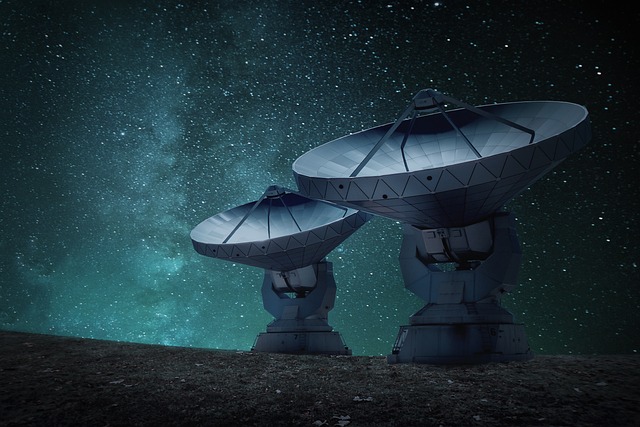
Astronomy is the study of celestial objects, such as stars, planets, and galaxies, and has captivated humans for centuries. From ancient civilizations using the stars to navigate and tell stories, to modern-day astrophysicists studying the mysteries of the cosmos, astronomy has come a long way. Thanks to technology such as telescopes, spacecraft, and advanced computer systems, we can explore the depths of space. This gave us a much deeper astronomy overview in unprecedented ways.
One of the most fascinating aspects of astronomy is the sheer scale of the universe. Our own solar system, consisting of the Sun, eight planets, and numerous moons, is just a tiny speck in the grand scheme of things. Beyond our solar system lies billions of other stars and planets, many of which we have yet to discover.
But astronomy overview is not just about exploring the vast expanse of space. It also helps us understand our own planet and the way it interacts with the universe. For example, studying the effects of solar flares on Earth’s magnetic field can help us better prepare for space weather events that could potentially damage our electronics and communication systems.
Through astronomy overview, we can answer age-old questions about the origins of the universe and how it came to be. The Big Bang theory, for example, explains the beginning of the universe as a massive explosion that occurred approximately 13.8 billion years ago.
But even with all the advancements in technology and understanding, there is still so much we don’t know. The universe is full of mysteries and wonders that continue to captivate and inspire us.
So the next time you look up at the night sky, remember that you’re not just staring at a few blinking lights – you’re looking at the universe itself, and all the secrets it holds.
Interesting Astronomy Facts
Embark on a fascinating journey through the cosmos as we uncover some intriguing astronomy overview and facts. From mind-boggling phenomena to awe-inspiring discoveries, these snippets of knowledge will leave you in awe of the wonders that exist beyond our planet.
Cosmic Scale: The Vastness of the Universe
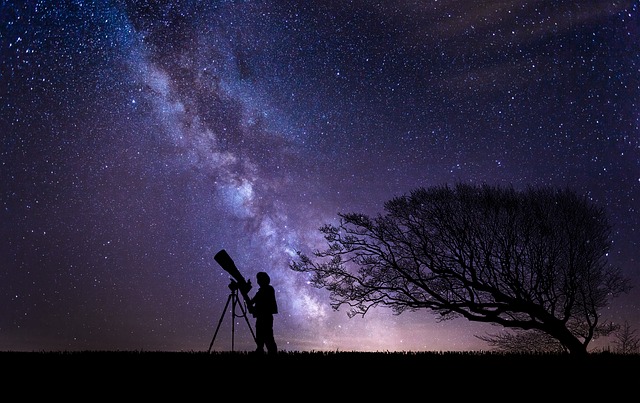
One of the most mind-boggling aspects of astronomy is the sheer scale of the universe. From the unimaginable distances between celestial objects to the mind-blowing number of galaxies, exploring the cosmic scale is a humbling and awe-inspiring experience.
The Observable Universe
When we contemplate the size of the universe, it is crucial to understand that we can only observe a portion of it – the observable universe. Current astronomy overview and estimates place the diameter of the observable universe at a staggering 93 billion light-years.
Now, this might seem contradictory, considering the age of the universe is believed to be approximately 13.8 billion years. So how can the observable universe be larger than the age of the universe itself?
To unravel this cosmic conundrum, we need to consider the expansion of space. The universe has been expanding since the Big Bang, and during this expansion, light from distant objects is stretched as space expands. This phenomenon, known as cosmological redshift, leads to an apparent increase in the distance between galaxies. Therefore, the objects we observe today appear to be farther away than they actually are when accounting for the expansion of space.
Thus, the diameter of the observable universe is a product of the initial size at the time of the Big Bang and the subsequent expansion over billions of years. This concept might leave us in awe of the vastness of the cosmos and the limitations of our perception.
The Hubble Ultra-Deep Field
In 2004, the Hubble Space Telescope captured an iconic image named the Hubble Ultra-Deep Field (HUDF). This image represents a pencil-point-sized area of the sky, but behind its seemingly unremarkable facade lies a treasure trove of galaxies.
By staring at a seemingly empty patch for a total of eleven days, the Hubble detected light from incredibly distant galaxies that had traveled for billions of years to reach us. These galaxies are so remote that they provide a glimpse into the universe’s distant past.
Spanning about one-tenth the diameter of the Moon, the HUDF image reveals approximately 10,000 galaxies. Each of these points of light represents not only a realm of stars, but also the possibility of planets, solar systems, and perhaps even life itself.
The HUDF is a testament to the vastness and richness of the universe. It reminds us that within even the smallest patch of seemingly empty space lies a tapestry of cosmic wonders waiting to be explored.
Celestial Phenomena
Supernovae
Somewhere in the universe, every now and then, a star meets its fiery demise in a spectacular display of cosmic fireworks – a supernova. These explosive events release an astounding amount of energy, momentarily outshining entire galaxies. The sheer brilliance of a supernova can rival that of an entire galaxy and can be seen across vast distances.
Though astronomy overview, we’ve learned that when a massive star reaches the end of its life, it undergoes a cataclysmic explosion that causes it to temporarily shine brighter than any other celestial object in its vicinity. The energy released during a supernova can exceed the total energy emitted by our sun throughout its entire lifetime. As the star collapses under its gravitational forces, it triggers a chain reaction in which heavy elements are synthesized and scattered into space, enriching the cosmic landscape. These elements, which include gold, silver, and uranium, are the very building blocks of life as we know it.
Black Holes
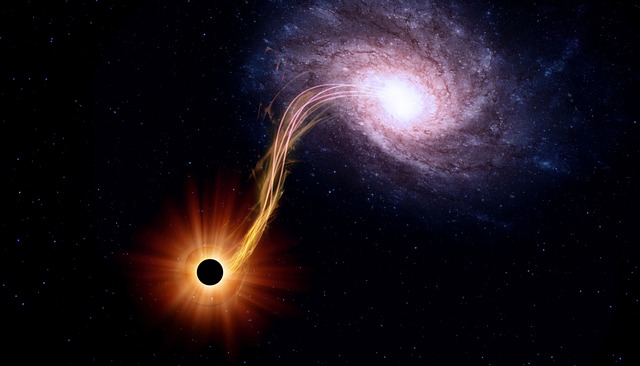
In the depths of space, hidden from sight, exist the enigmatic cosmic vacuum cleaners known as black holes. These celestial entities possess gravitational forces so immense that not even light can escape their grasp.
Current astronomy overview indicates that they’re essentially bottomless pits in spacetime, devouring everything that happens to stray too close.
The formation of a black hole begins with the collapse of a massive star, an event known as a supernova. What remains after the explosion is an incredibly dense core, known as a singularity, surrounded by an invisible boundary called the event horizon. Beyond this boundary, the gravitational pull becomes so great that not even light can escape, rendering black holes invisible to traditional observation methods.
But the influence of black holes extends far beyond their event horizons. They introduce mind-bending phenomena such as time dilation and the stretching of space itself. They warp the fabric of the universe, creating gravitational waves that ripple through spacetime. These waves, first predicted by Albert Einstein, have been detected and confirmed by modern experiments, marking a watershed moment in our understanding of the cosmos.
Exoplanets and the Search for Life
Beyond our own solar system, lies a staggering number of exoplanets – planets that orbit stars other than our Sun. With advancements in technology and astronomy overview, astronomers have been able to detect and study these distant worlds, leading to remarkable discoveries and fueling our fascination with the possibility of life beyond Earth.
A Universe of Exoplanets
In the past few decades, astronomers, through more in-depth astronomy overview, have made groundbreaking progress in finding exoplanets. Thousands of these alien worlds have been discovered, and the numbers continue to rise with each passing year. These exoplanets come in a variety of sizes, from gas giants larger than Jupiter to rocky planets similar to Earth.
The Kepler Mission
One of the most significant milestones in exoplanet exploration was the Kepler mission, a space telescope launched by NASA in 2009. Its primary objective was to survey a specific region of the sky, searching for exoplanets in the habitable zone, also known as the “Goldilocks zone.” This zone refers to the distance from a star where conditions could potentially support liquid water and, therefore, life as we know it.

Potential Homes for Life
Thanks to the Kepler mission’s findings, astronomy overview has identified numerous exoplanets that reside within the habitable zone of their parent stars. These planets exhibit conditions that may be conducive to the existence of liquid water, a crucial ingredient for life as we understand it. While the presence of liquid water does not guarantee the presence of life, it provides a significant starting point for further investigation.
Exoplanetary Diversity
The diversity of exoplanets is truly staggering. From scorching hot gas giants that orbit their stars in just a few days to icy super-Earths located in the outer reaches of their systems, each exoplanet presents its own unique characteristics and potential for hosting life. It is this diversity that captures the imagination of astronomers and fuels the ongoing quest to find habitable worlds.
The Search for Extraterrestrial Intelligence (SETI)
The discovery of exoplanets has prompted scientists to expand their search beyond habitable environments and explore the possibility of intelligent life elsewhere in the cosmos. Initiatives such as the Search for Extraterrestrial Intelligence (SETI) actively scan the skies for potential signals from advanced civilizations.
Cosmic Events
Based on our current astronomy overview, numerous events unfold, shaping the cosmic landscape and captivating astronomers with their awe-inspiring power. From breathtaking bursts of energy to celestial collisions that birth precious elements, cosmic events provide a glimpse into the dynamic nature of our universe. Let us delve into two extraordinary phenomena that highlight the beauty and magnitude of these cosmic events.
Gamma-Ray Bursts
When it comes to extraordinary bursts of energy, gamma-ray bursts reign supreme. These cosmic fireworks release more energy in mere seconds than our Sun could emit throughout its entire lifetime. It is like witnessing the universe’s own spectacular light show.
Gamma-ray bursts occur when massive stars, tens of times the size of our Sun, undergo spectacular explosions called supernovae. During this cataclysmic event, jets of matter and energy shoot out at nearly the speed of light in opposite directions. As these jets collide with surrounding gas and dust, they unleash a torrent of high-energy gamma-ray photons.
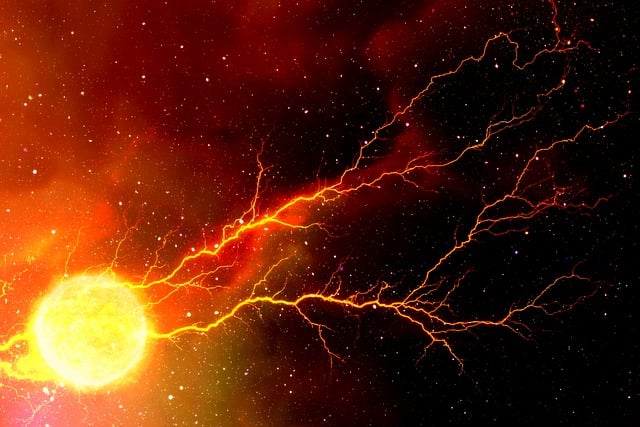
These bursts emit such intense gamma-ray radiation that they can be detected from billions of light-years away, despite lasting only a few seconds. They are incredibly rare and occur randomly throughout the universe.
Scientists eagerly study gamma-ray bursts to unravel the mysteries behind these extraordinary events and gain deeper insights into the life cycle of massive stars.
The Cosmic Symphony of Neutron Stars
Neutron stars, the remnants of massive stars after they have exhausted their nuclear fuel, bring forth a cosmic symphony when they collide. These extraordinary events give rise to gravitational waves, ripples in the fabric of space-time, and produce an abundance of heavy elements like gold and platinum.
When two neutron stars approach each other in a binary system, their gravitational dance propels them closer and closer until they finally collide. The resulting collision is a breathtaking spectacle, releasing an immense amount of energy. This energy generates gravitational waves, which ripple through the fabric of space and time, carrying information about the cataclysmic event across the cosmos.
The collision also gives birth to a cosmic alchemy of heavy elements. It is within the intense heat and pressure of this heavenly collision that atoms are crushed and synthesized, creating elements that were once unimaginable. The gold, platinum, and other precious metals that adorn our planet owe their existence to these cataclysmic cosmic events.
The Expanding Universe
One of the most groundbreaking discoveries in the field of astronomy was made by Edwin Hubble in the early 20th century. His observations revolutionized our understanding of the universe and led to the development of the Big Bang theory. Let us delve into this fascinating topic and explore the concept of the expanding universe.
Edwin Hubble’s Observations
In the 1920s, Edwin Hubble used the powerful telescopes at the Mount Wilson Observatory in California to observe distant galaxies. What he found astonished the scientific community: galaxies were not just static points of light, but they were moving away from each other. This discovery marked the beginning of a new era in cosmology and laid the foundation for our current understanding of the universe.
The Doppler Effect and Redshift
Hubble based his observations on the Doppler effect, which is the change in frequency or wavelength of a wave (in this case, light) as the source and observer move relative to each other. When an object is moving away from us, the wavelengths of the light it emits appear stretched, causing a shift towards the red end of the spectrum. This phenomenon is known as redshift.
Hubble’s Law and the Expansion of the Universe
By measuring the redshift of galaxies, Hubble was able to determine that the farther a galaxy is from us, the faster it is moving away. This relationship is known as Hubble’s law, and it provides strong evidence for the expansion of the universe. Hubble’s law also implies that the universe had a beginning, as all galaxies must have been closer together in the past.
The Big Bang Theory
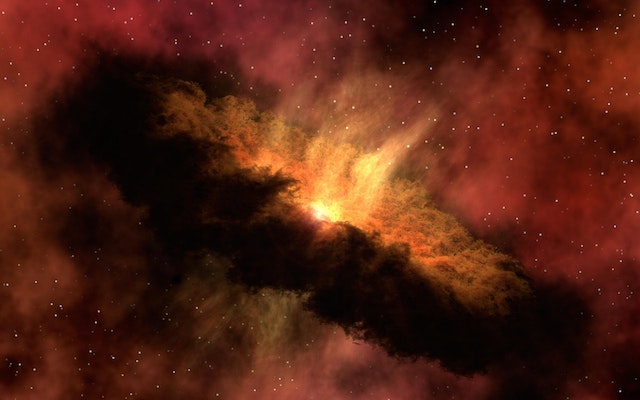
Building upon Hubble’s observations, scientists developed the Big Bang theory, which proposes that the universe began as a singularity, a point of infinite density and temperature.
Around 13.8 billion years ago, this singularity underwent a rapid expansion known as the Big Bang, giving birth to the universe as we know it today.
Evidence for the Big Bang
The Big Bang theory is supported by various lines of evidence, including the cosmic microwave background radiation, the abundance of light elements such as hydrogen and helium, and the large-scale distribution of galaxies. These pieces of evidence not only validate the concept of the expanding universe but also provide insights into the early stages of cosmic evolution.
Implications of an Expanding Universe
The concept of an expanding universe has profound implications for our understanding of the cosmos. It suggests that space itself is stretching, carrying galaxies away from each other. Furthermore, it raises intriguing questions about the fate of the universe – will it continue to expand indefinitely or will it eventually collapse in a Big Crunch?
Astronomy is a captivating field filled with astonishing facts and mind-expanding concepts. From the astonishing speed of light to the dramatic deaths of stars, and the abundance of galaxies and exoplanets, the universe never ceases to amaze. By exploring these fascinating astronomy overview and facts, we gain a greater appreciation for the wonders that lie beyond our planet and continue to push the boundaries of our understanding of the cosmos. So, let these facts ignite your curiosity and inspire you to delve deeper into the mysteries of astronomy.
